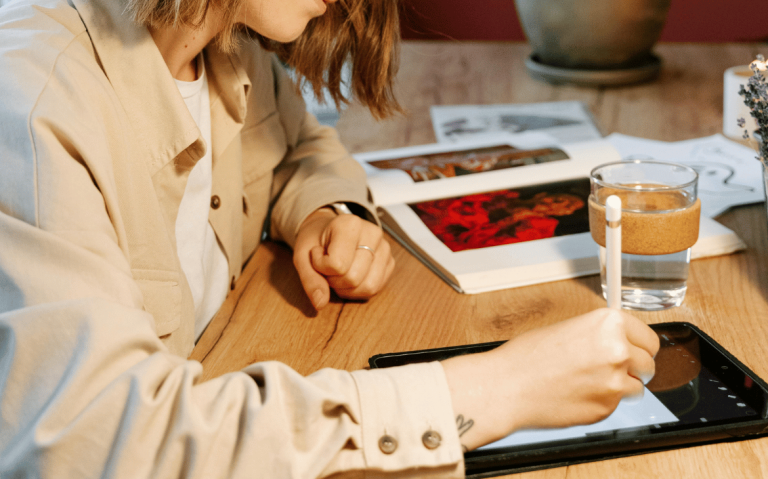In 2025, the best designs are not always those filled with detail — they’re the ones that know when to hold back. In a world overflowing with visual noise, negative space (also known as white space) has become one of the most powerful tools in modern design. Whether used in web design, branding, or product interfaces, negative space helps designers draw attention, create balance, and guide the user’s eye effortlessly.
This invisible yet essential design element plays a key role in minimalism, allowing clarity and focus to shine through. Let’s explore how mastering the art of negative space can transform your designs from cluttered to compelling.
What Is Negative Space?
Negative space refers to the empty areas around or between design elements — text, images, icons, and layouts. While it might seem like “blank space,” in reality, it’s a strategic design choice that enhances composition and communication.
There are two main types:
- Active negative space: Intentionally used to direct attention and structure layouts.
- Passive negative space: Naturally occurring gaps that provide breathing room and visual ease.
When used correctly, negative space doesn’t mean “less design” — it means better design.
Why Negative Space Matters in 2025
Today’s users are constantly bombarded with information. Overcrowded designs can quickly cause fatigue and confusion. Negative space combats this by allowing the most important content to stand out while keeping users comfortable and focused.
Key benefits include:
- Improved readability: Enhances text legibility and content hierarchy.
- Emotional balance: Creates calm, confidence, and sophistication.
- Stronger focus: Directs attention to CTAs or important elements.
- Better UX: Simplifies navigation and boosts engagement.
In the age of mobile-first design, where space is limited, the intelligent use of negative space has become essential for clarity and performance.
The Connection Between Minimalism and Negative Space
Minimalism is not about removing design — it’s about refining it. Negative space is the foundation of minimalist design, emphasizing simplicity and purpose.
Minimalist designs use whitespace to:
- Highlight key elements such as headlines or CTAs.
- Create a sense of luxury and sophistication through restraint.
- Improve information flow by reducing cognitive overload.
- Encourage intentional interaction, making users more mindful of their actions.
Brands like Apple, Google, and Muji master this balance — using negative space to express clarity, innovation, and confidence.
How to Use Negative Space Effectively
- Prioritize hierarchy: Use spacing to group related elements and guide visual flow.
- Balance contrast: Combine empty space with bold typography or color to enhance focus.
- Avoid clutter: Remove unnecessary graphics and text for clean compositions.
- Test responsiveness: Ensure spacing remains effective across mobile, tablet, and desktop layouts.
Negative space should enhance comprehension, not feel empty — every gap should have a purpose.
Tools and Techniques for Mastering Whitespace
Use grid systems and layout tools like Figma, Sketch, or Adobe XD to maintain consistent spacing. Conduct A/B testing to see how whitespace impacts conversions and readability.
Even subtle adjustments — like increasing line height or padding — can dramatically improve overall user experience.
Conclusion
In 2025, negative space is more than a design technique — it’s a philosophy of focus. It transforms visuals into clear, elegant, and meaningful experiences that resonate with users.
By embracing minimalism and the intelligent use of space, designers can create work that feels balanced, sophisticated, and timeless.
After all, great design isn’t about what you add — it’s about what you choose to leave out.





